A Simple Formula for Writing Killer Headlines
SUKEY GAVEN | 22 JULY 2015
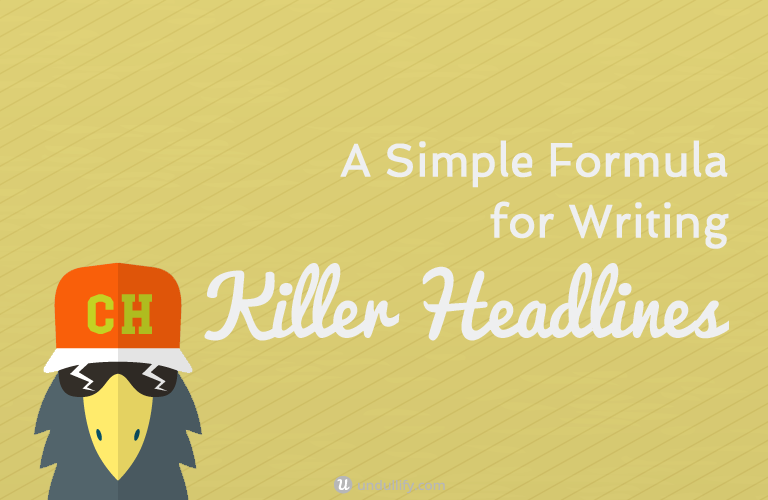
David Ogilvy, widely hailed as “The Father of Advertising”, thought headlines were so important that he believed them to be worth 90% of the money invested in advertising.
He considered them the most important part of any copy, something which is still true today.
Your headline is the main reason why someone decides to continue reading your copy, so it makes sense to spend the most time on it.
So, headlines are important! But how do you write them?
Follow this simple formula for writing killer headlines:
The Right Length + Number or Trigger word + Adjective + Rational + Keyword + Promise + Testing
Now, let me break it down further.
Keep it short
The length of your title really matters. Overly long titles are harder for people to comprehend and they are often cut off by search engines.
For example, for posts on social networks it seems to be crucial to keep your titles short to increase engagement:
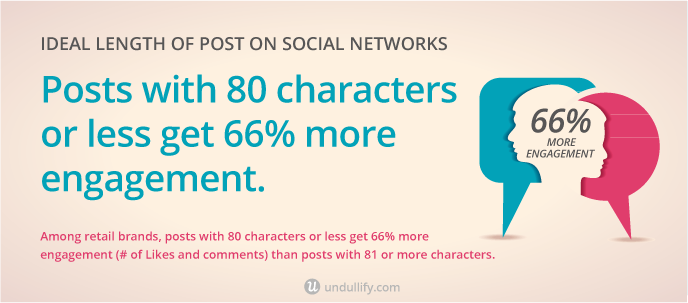
For your blog post titles, follows these 2 principles to optimize:
Keep it below 65 characters – if you want your headline to be read in search results, you need to keep it below 65 characters. Everything above that will be cut off.
When your title is too long, people won’t be able to understand what your article is about and this will decrease your CTR (click-through rate) from search engines, as well as your traffic.
The perfect length is 6 words – the reason why this is true is that when people read headlines, they scan the first 3 and the last 3 words to understand what the topic is about. When you keep your headline to 6 words, you keep it short and you give them exactly what they want.
Focus on the first 3 and last 3 words – if you need to write a longer headline, be sure to include the most important words in the first 3 and last 3 words.
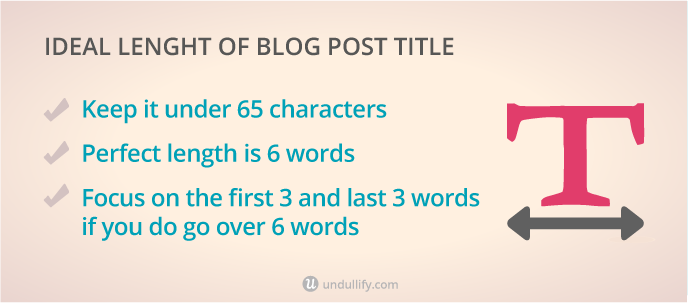
Use trigger words
These words make readers curious, while prompting them to search for a solution and increasing their desire to read the article.
Trigger words are:
- What (“What you need to do to increase your sales”)
- Why (“Why you need to write unique content for your blog”)
- How (“How to increase website visitors”)
- When (“When to quit your job”)
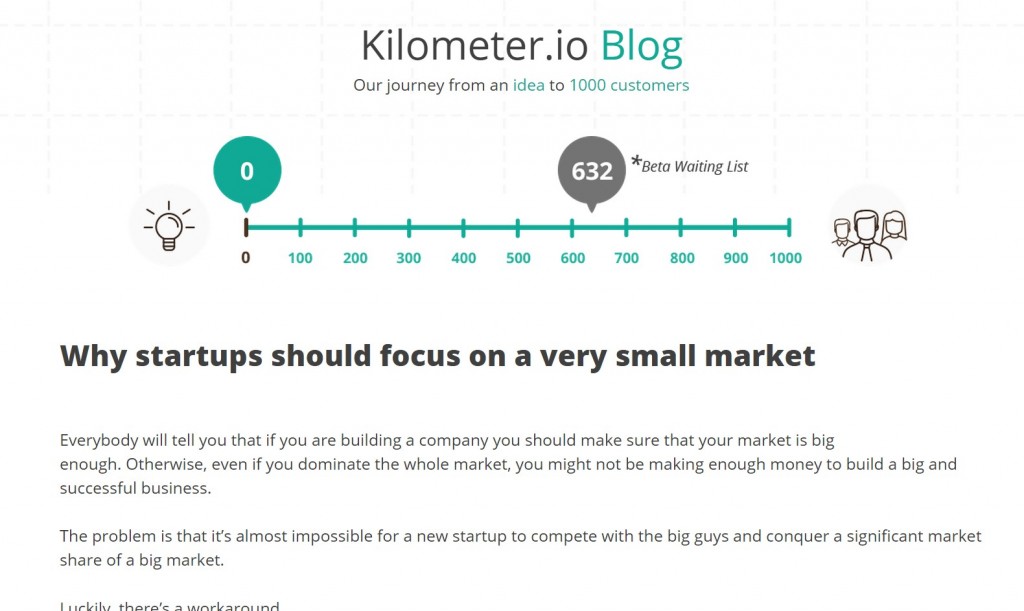
Trigger words are often found in blog post headlines by Kilometer.io
The most typical ones used in articles are “Why” and “How”. Most often, blog posts are using either a trigger word or a number. Rarely does it sound good to use both.
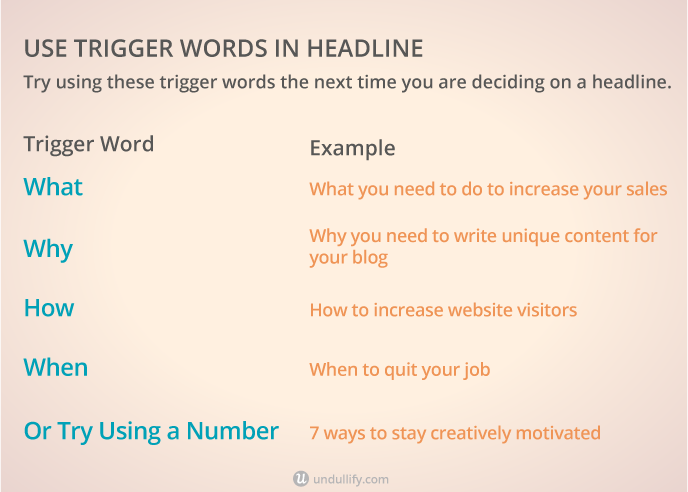
Use interesting adjectives
Adjectives are words that help describe a noun – in other words, a thing or a person.
For example, in the headline “How to Stop Writing Crappy Content,” the word “Crappy” is an adjective because it helps describe the noun “content.”
The good use of adjectives can influence more people to read your copy. Researchers from Purdue University found that popular writers use more adjectives.
What are the rules for using adjectives?
Use adjectives that trigger emotion – sensory adjectives are able to influence our emotions. They can make us see and feel the thing that we’re talking about much better.
- Rough
- Dazzling
- Mind-blowing
- Bright
- Delicious
Use adjectives that convey benefits – another great use of adjectives is to convey benefits to the user. These are words like:
- Effortless
- Free
- Easy
- Fast
- Fun
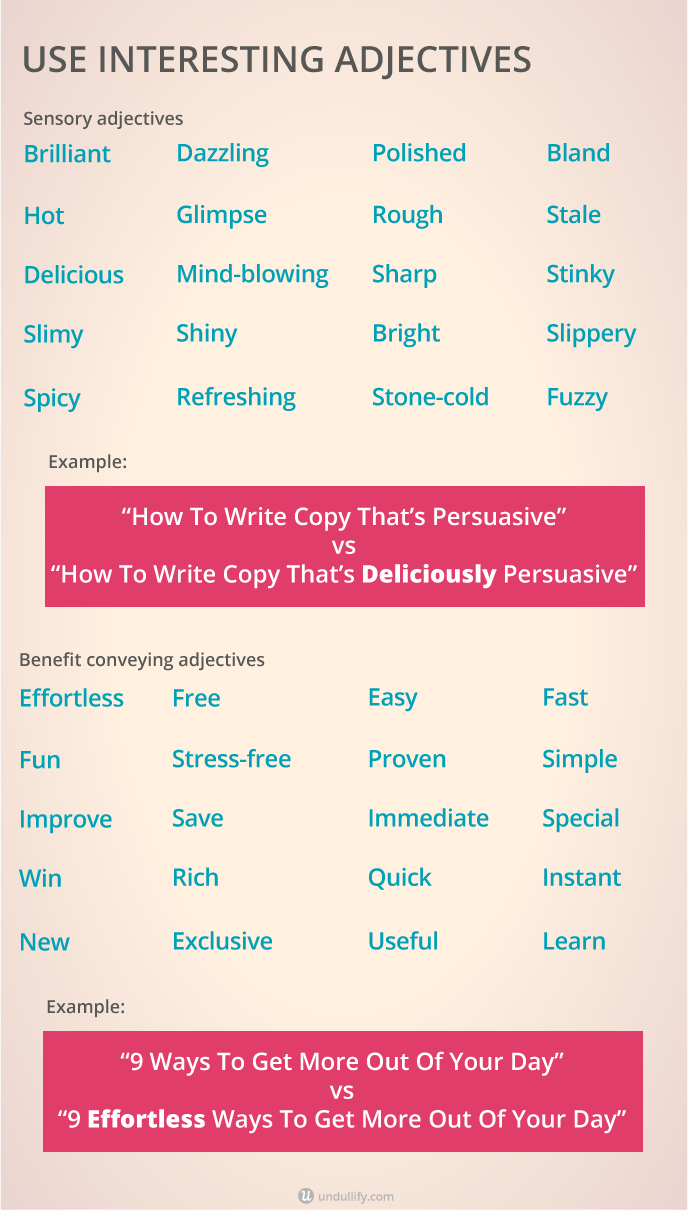
Use unique rationales
Try to be creative and avoid using words as “things”. It’s so much better to use:
- Principles
- Facts
- Secrets
- Lessons
- Ideas
- Ways
- Tricks
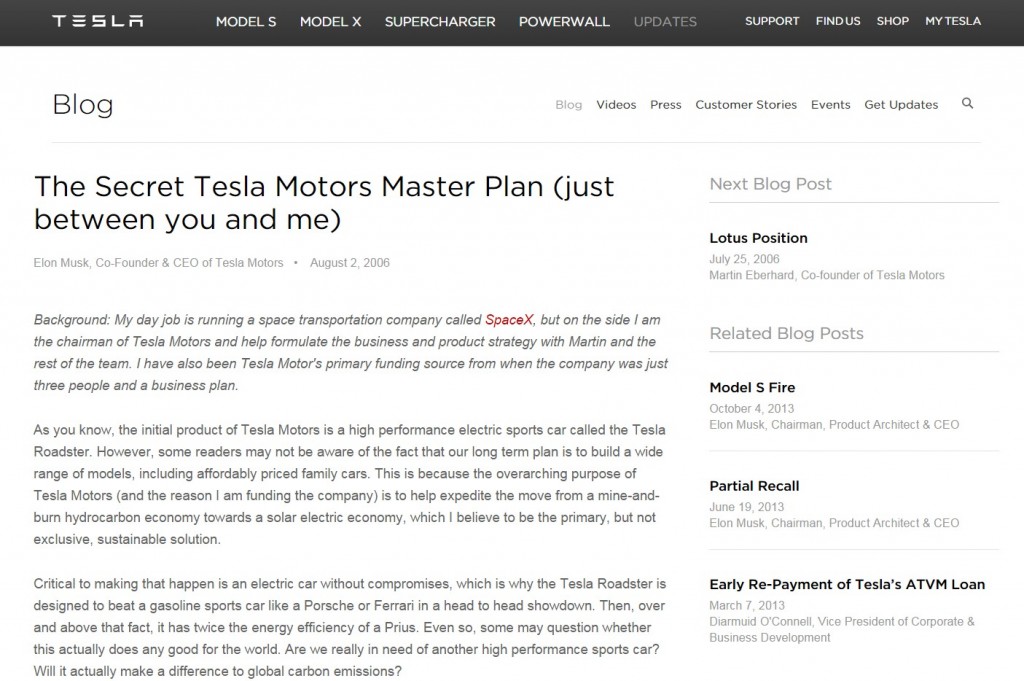
A compelling headline by Telsa
Be specific and promise something big
Your headlines should be ultra-specific so people know beforehand what they are going to get from reading your post.
If your headlines are not specific enough, people won’t know if what you’re offering will be of value to them.
For example, a headline like “How to Win More” is not specific enough; you wouldn’t be able to understand what it’s really about without reading the post (and most people won’t).
A better headline would be “How to Win More Customers.” This one is a bit more specific, but it’s still not clear what type of business this is aimed at.
The best option would be to use ultra-specific language and create a title like “How to Win More Customers for Your Real Estate Business.” That way, the title matches the intent of someone who is in the real estate business and is struggling with getting more clients.
That person will think: “This is exactly what I need right now!”
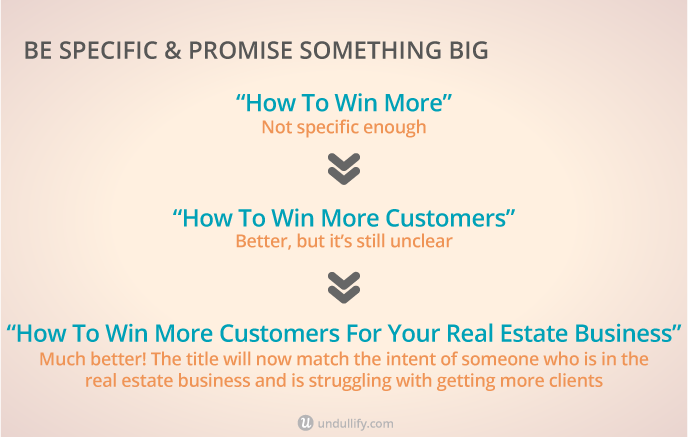
Here’s what you should do to write more specific headlines:
Understand what your reader needs – knowing your target audience is the key to creating great copy and outstanding headlines. Without this knowledge, you’ll never be able to create good headlines.
To understand what your audience is interested in reading, you can do the following:
- Set up interviews and ask them directly
- Send surveys to people
- Use Google Keyword Planner to target keywords and phrases with a high enough search value
- Use Google Analytics to find your most visited content and identify which topics matter most to your audience
- Read the news, industry reports and take a look at your competition to find unfulfilled needs and desires.
Promise a specific outcome – the only reason someone is willing to spend time reading an article is to learn something from it. So, ask yourself this question:
What do people want to learn from reading my post?
If you know the specific outcome people are looking for, you’ll be able to address it in your headline and get more people to read your copy.
For example, if your target audience wants to know how to convert more website visitors into clients, don’t teach them how to get more traffic.
Convey a sense of urgency – whenever you can, use a sense of urgency to compel your visitors to read your article right now.
To do that, you need to use powerful words and phrases that will make them feel that they’ll lose something if they don’t act ASAP.
A great example would be this headline: “Are You Losing Sales Because Of Bad Customer Support?”. Since no business owner wants to lose sales, readers will be compelled to read the article.
You can twist this to make them feel like they’ll get something if they act right away.
For example, “How To Win 5 New Consulting Clients Today”.
Again, the word “Today” with “Winning New Clients” will trigger an immediate response in people looking to win more business.
A great list of urgency words or phrases that you can use are:
- Losing
- Today
- Now
- Don’t miss out
- Hours left
- Last chance
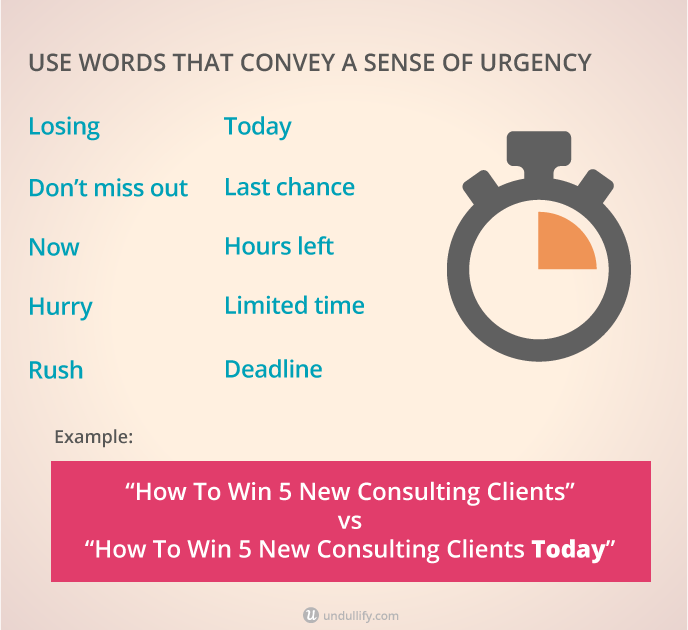
Use numbers – numbers are triggers that instantly grab our attention and immediately hook people’s interest. They reach directly into the subconscious mind and say, “this message is important.”
Sonia Simone from Remarkable Communications said that blog posts with a number in the headline bring 2.5-8 times more traffic.
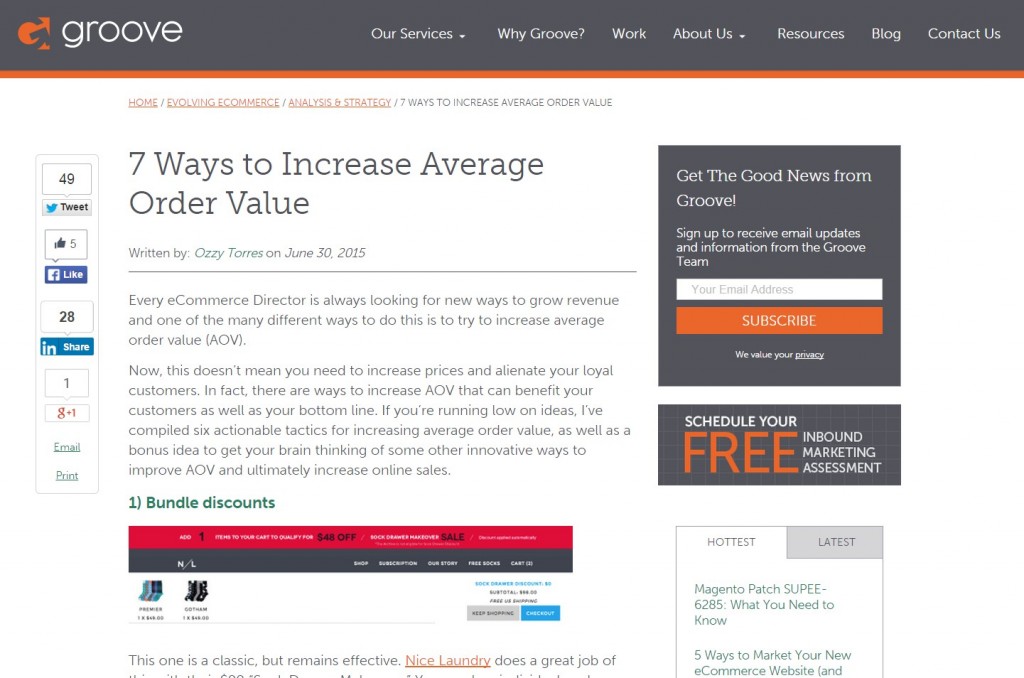
A simple yet effective headline making use of numbers by Groove
Use keywords
When you use keywords in the title tag, search engines will highlight them in the search results. That way, when a user performs a search using your keyword, it will be highlighted in the result.
This gives you better visibility, as well as higher CTRs, which means more search traffic.
To get the most out of your keywords in the title, be sure to:
Identify the right keyword phrase for the post – to maximize the traffic that you get from search engines, you need to choose keywords that have high enough search volume per month and are low in competition.
You can easily find these words by going to Google Keyword Planner and typing in your main keyword. This tool will give you suggestions for other related keyword phrases that you can use.
To learn more about keyword research, you can check out The Definitive Guide to Keyword Research.
Place keywords close to the front end of the headline – Moz found that placing keywords at the beginning of the title it will help you rank better in search engines.
Match keywords with your value promise – your keywords must also be connected to the value that the reader is seeking. They must point out that whoever reads this article will instantly find the solution to their problem.
For example, “What You Should Know about Business” sounds kind of generic and doesn’t really bring any value to the reader. What are they going to get from reading the post?
So, a much better title would be, “What You Should Know about Starting a Business in 2015”; this headline is much more specific and promises a specific value for anyone who’s looking forward to becoming an entrepreneur this year.
A/B test headlines
What should you do if you have several great ideas for headlines, but you just don’t know which one to pick?
Very simple. You test them out to find out which performs best.
A/B testing is a very popular practice today, but what few people know is that, in addition to testing generic website changes, you can also test blog post headlines.

A/B testing not only works for post headlines. OptiMonk A/B tested their exit-intent popup to increase conversion rates.
Here’s how to test headlines according to Buffer:
1. Choose 2 or 3 headlines – to start, you should only compare two headlines. Take some time to brainstorm the best headlines and choose the top two or three to test in the field.
2. Schedule tweets with both headline variations – schedule a tweet for each headline you’d like to test. Your best option here is to carry out this part of the process with Buffer; that way, you can easily check reports, analyze and compare performance.
3. Send the tweets one hour apart – schedule each tweet one hour apart. This is a good way to make sure that the difference in results between the two headlines is not due to tweeting at different times of day.
4. The better performing tweet earns the permanent blog post headline – when you know which tweet performs best, simply copy and paste it as the headline of your new post. Over time, you’ll see a big difference.
In Conclusion:
Learning how to write killer headlines takes time and practice. If you follow these tips and apply them to the headlines for your blog posts, you’ll soon see improvements in the performance of those posts and your website traffic.
What are your principles for writing killer headlines? Do you just go with what comes to mind first, or do you follow a more scientific approach? Let me know in the comments below.

